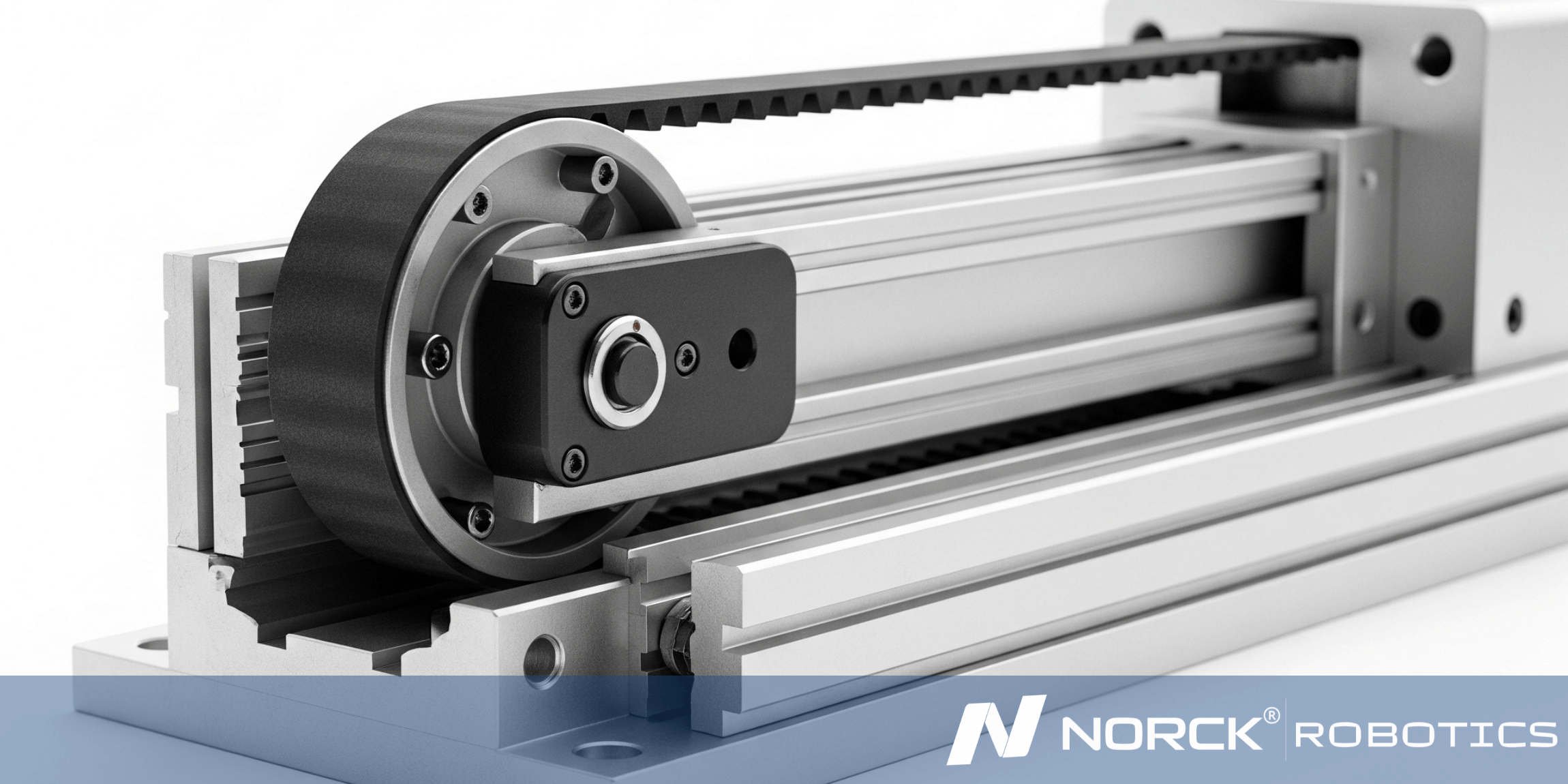
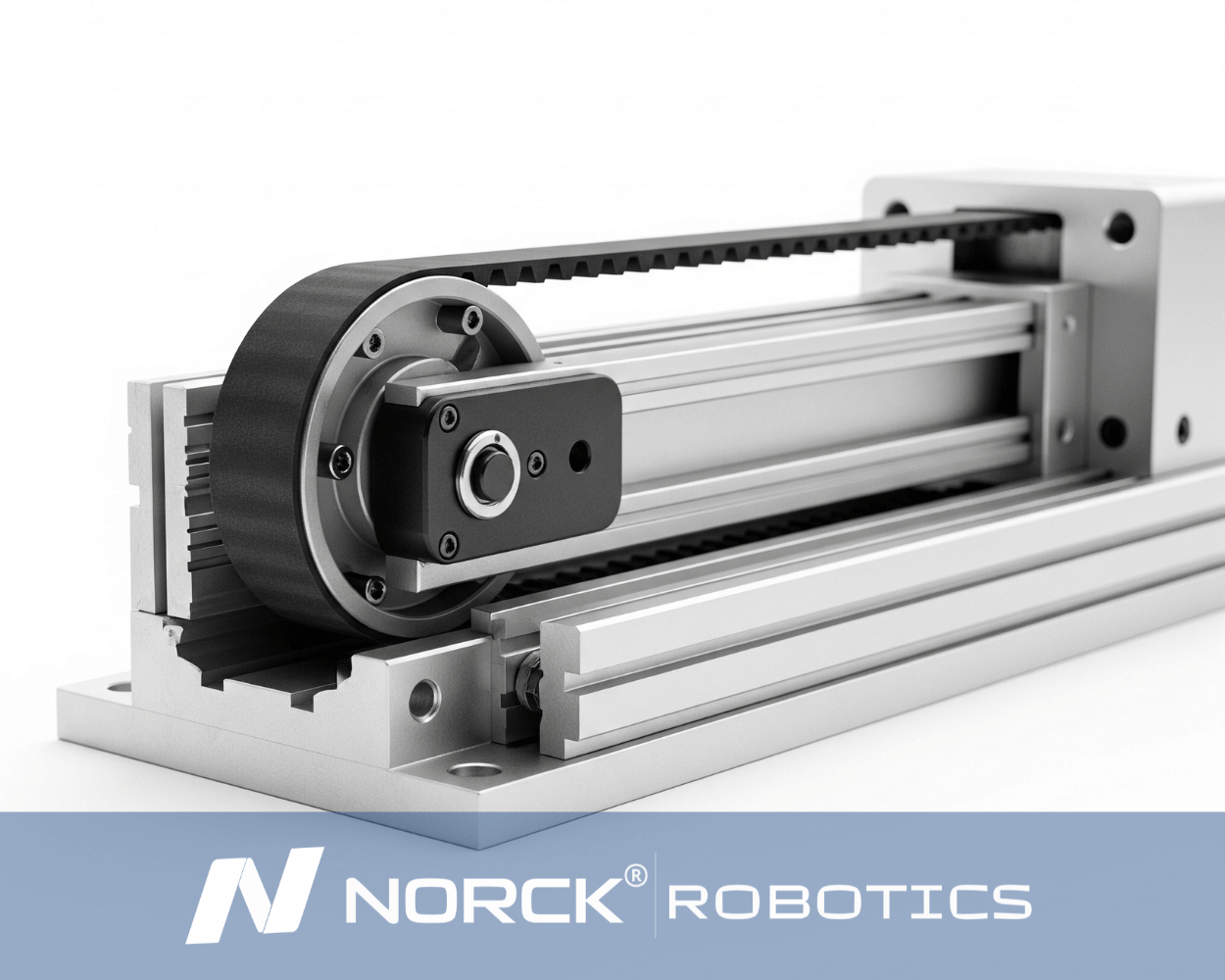
Ready to automate your future? Get a quote from Norck Robotics now!
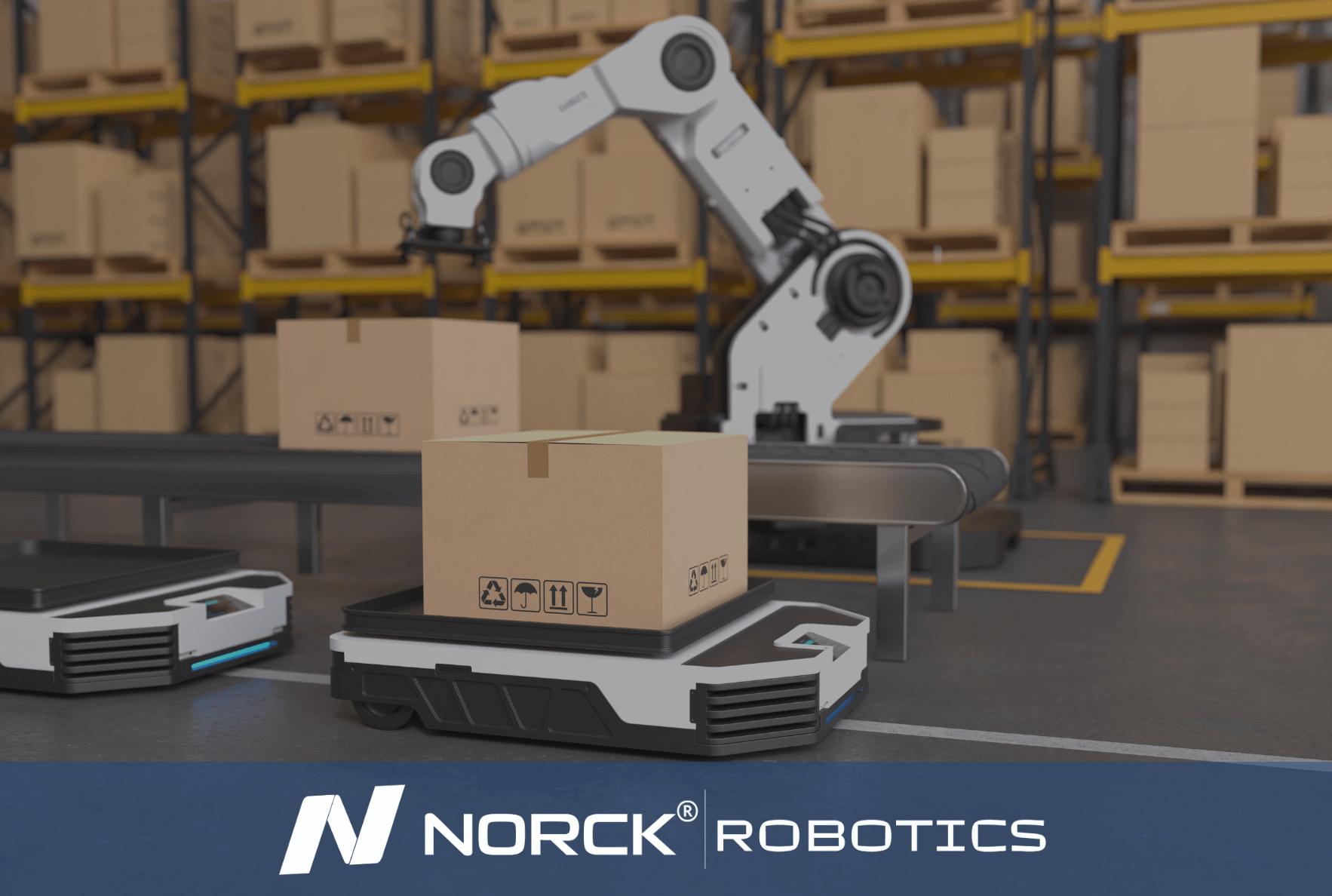
Norck Robotics specializes in providing unique robotic automation and engineering solutions designed to meet the specific operational needs of each client. Our expertise covers a wide range of industries and applications.
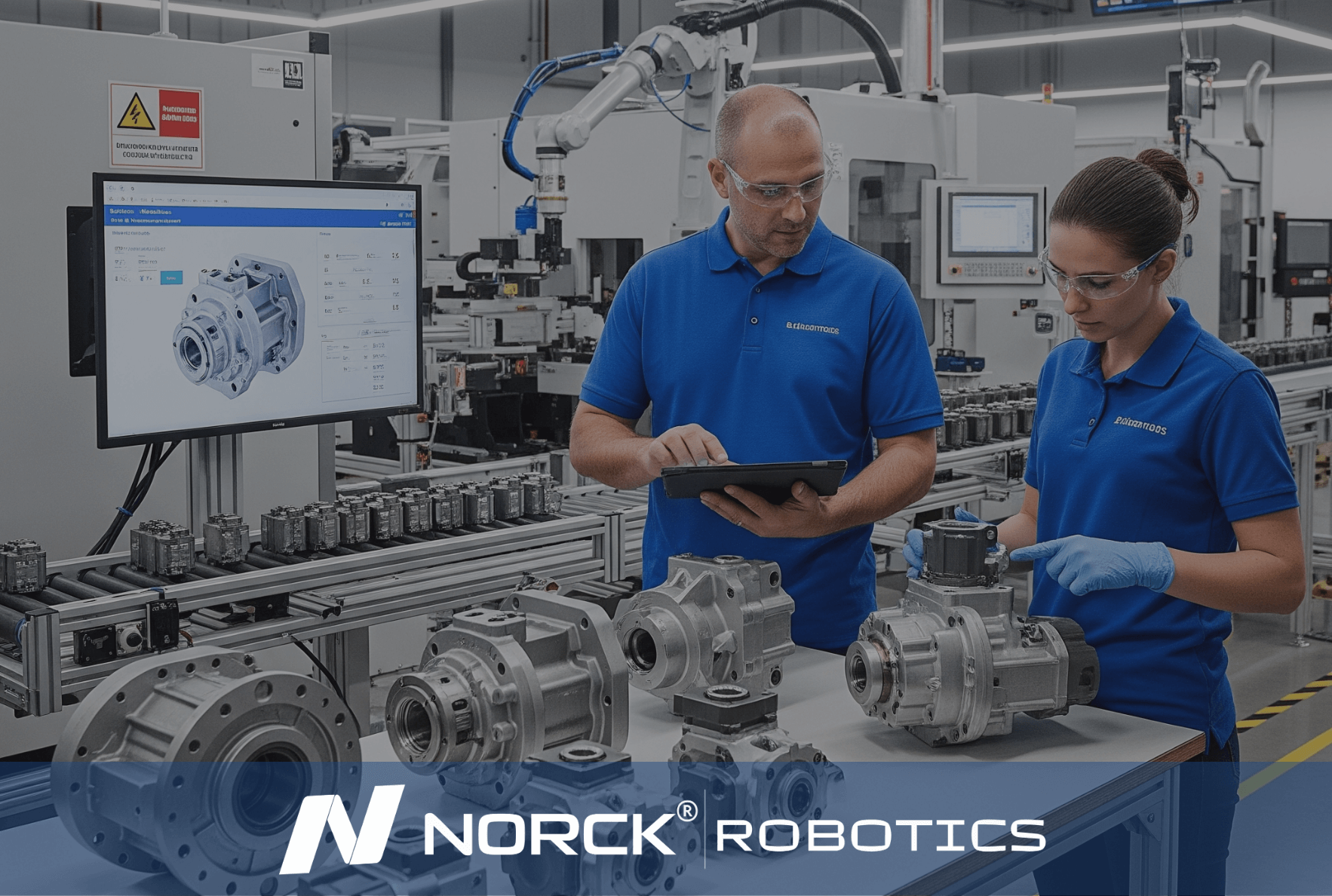
Norck Robotics delivers turnkey robotic automation and engineering solutions tailored to your specific needs across various industries.

Whether you need a single robotic cell prototype or full-scale factory automation, Norck Robotics engineers are ready to collaborate with you to bring your concept to life.
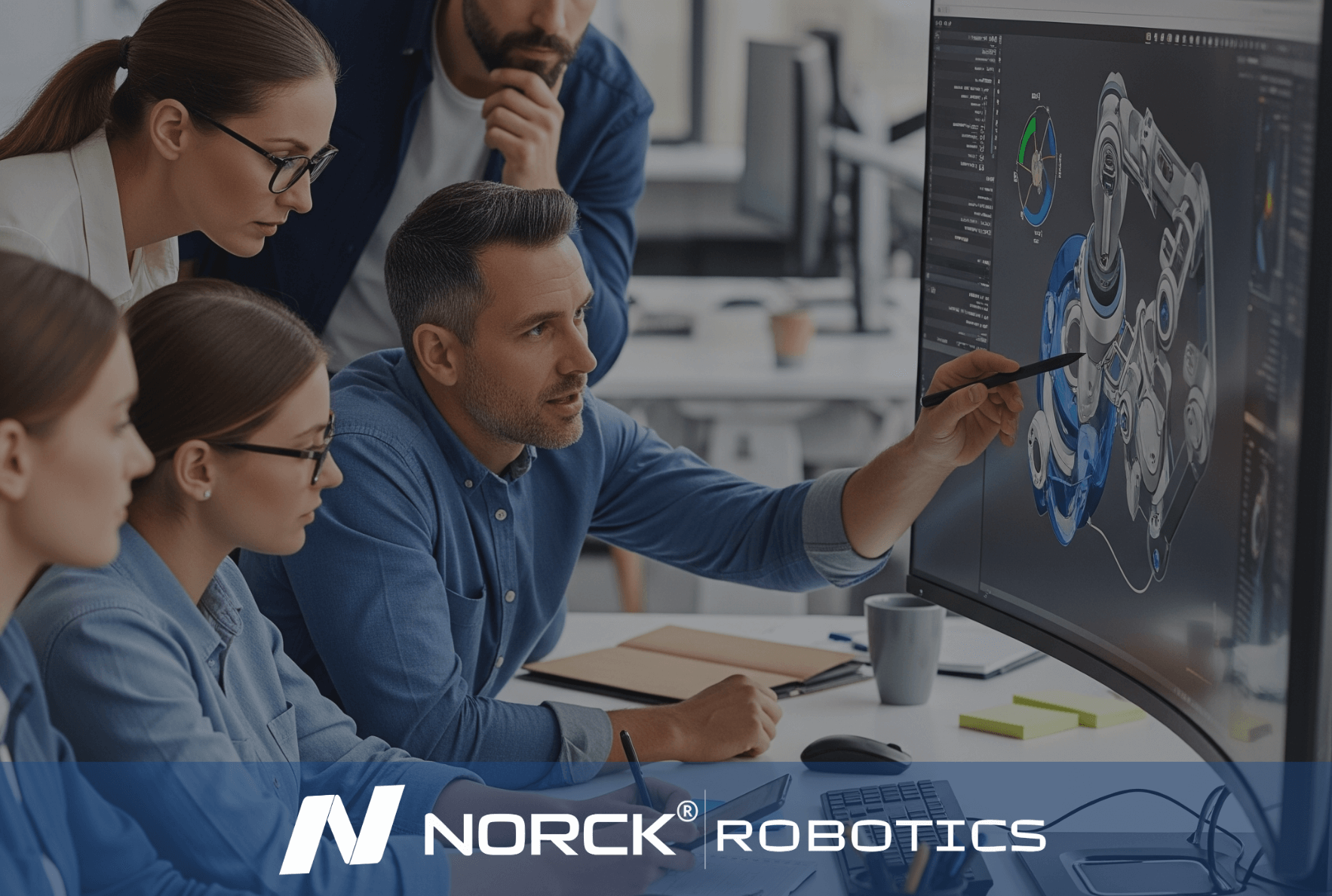
Norck Robotics engineers analyze your existing processes to provide feedback that enhances efficiency, cost-effectiveness, and productivity for robotic integration.
A belt drive system generates linear motion by converting rotary motion from a motor into straight-line movement. This system uses a continuous looped belt, usually made of rubber or reinforced material, looped around at least two pulleys: one attached to a motor and one or more idler pulleys.
When the motor turns, the drive pulley is turned. Since the belt is looped on the pulley, it rotates together with the pulley. If the belt is fixed to any moving part of some module, such as a platform or a carriage, the part is simply pulled along by the path of the belt, thus creating linear motion.
This mechanism finds itself extensively being put to use in 3D printers, CNC-type machines, and conveyor systems due to its efficient, relatively quiet, and smooth operation over a defined distance.
Belt drives have some distinct advantages, which is responsible for their popularity in numerous mechanical and automation systems:
In general, belt-drive systems weigh less than gear or chain systems. However, the belts themselves are manufactured using flexible materials such as rubber, polyurethane, or composites, therefore further reducing the overall weight of the machine. Thus, belt drives are better suited for applications that demand weight reduction, such as robotic systems or portable equipment.
Belt drives can be operated at quite high speeds with little vibration or noise. With less friction and no metal-on-metal contact as found in the chain or gear systems, belts can keep working as required under high motor rotations. Applications in which these features render the product ideal involve highly fast motions and extremely smooth operations, such as in 3D printing and automated production lines.
The other major advantage of belt drive systems is motion transfer over longer distances between components. Unlike gears, which need close-spaced assemblies, a belt system can function well over long distances without performance degradation. This means machine layout flexibility and an easier mechanical design for large or modular systems.

In addition to its own expert engineering team, Norck Robotics provides access to a network of hundreds of top-tier system integrators, robot manufacturers, and component suppliers across the United States, Germany, and Europe.

Working with Norck Robotics reduces dependency on manual labor, increases production consistency, and secures your operations against unforeseen disruptions, quality issues, and fluctuations. This enhances your company's supply chain resilience.
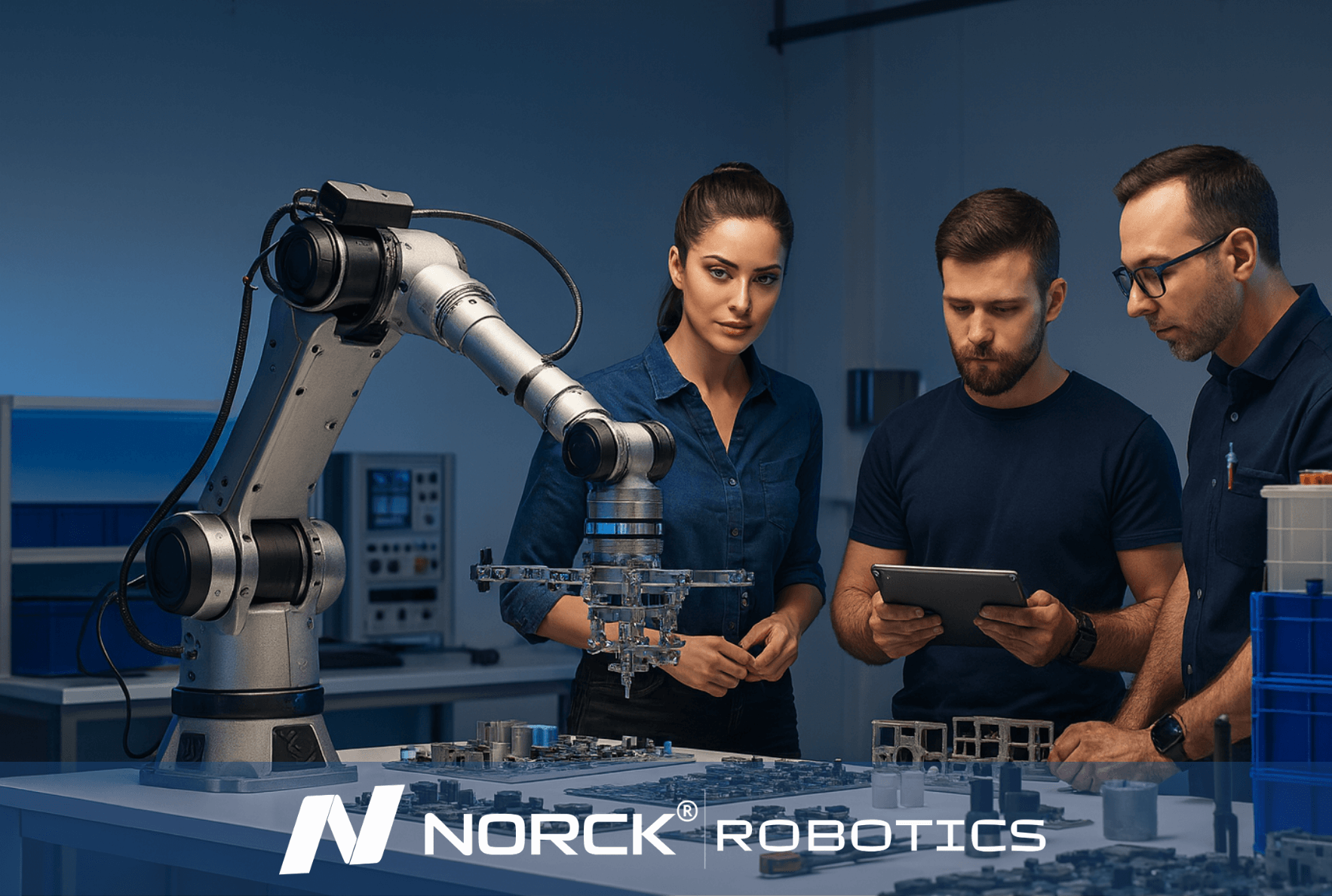
Norck Robotics advances digital automation by developing custom-designed robot grippers, advanced vision systems, and innovative simulation software. With an AI-driven, data-centric approach, it enables smarter system design, optimal performance, and predictive maintenance solutions.
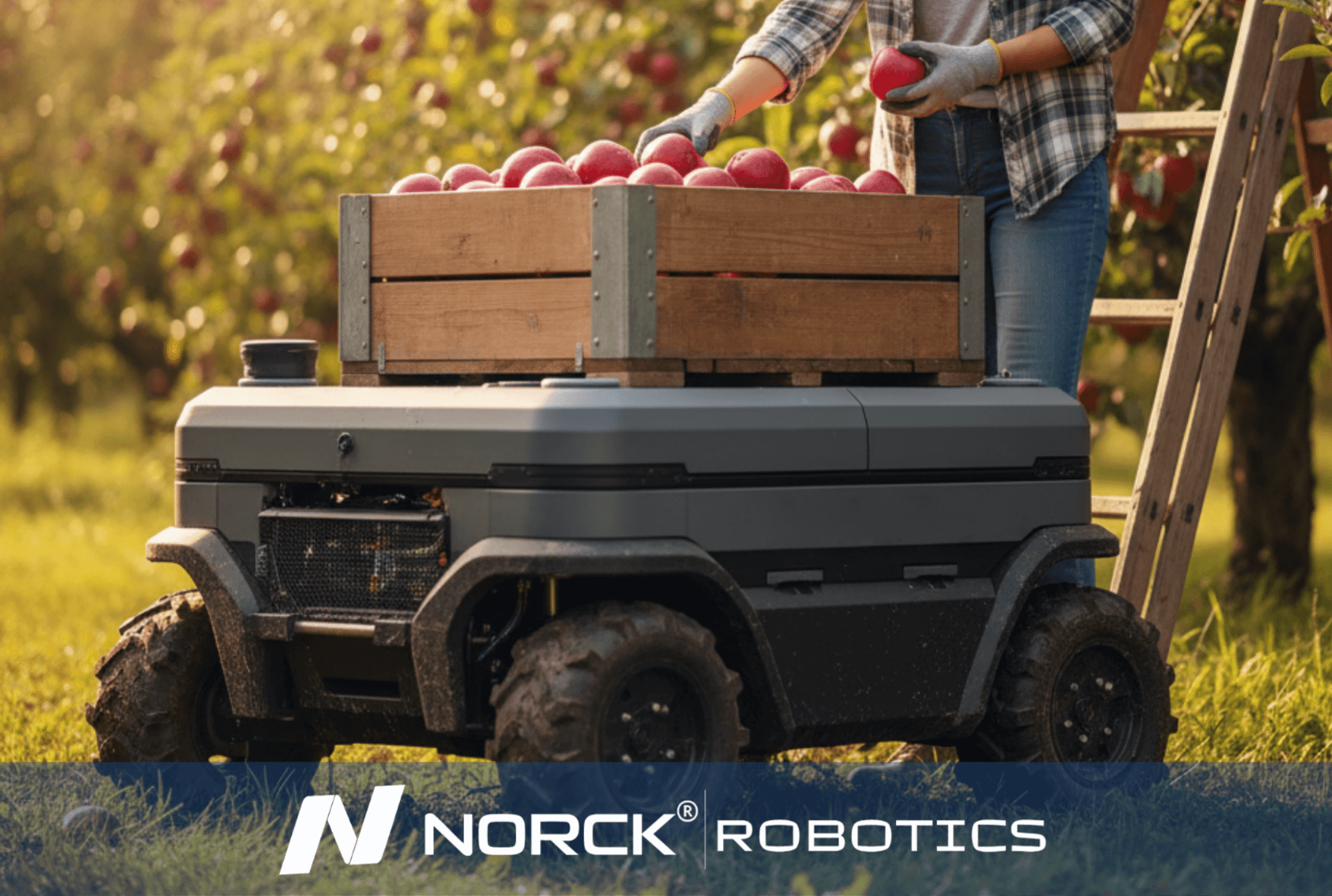
Norck Robotics encourages its partners to be carbon-neutral by reducing energy consumption and material waste through the efficiency of robotic automation, and prioritizes environmentally conscious suppliers.
When one compares belt-driven linear modules and screw-driven systems, it becomes evident that some of its major differences lie in load capacity and precision.
Load Capacity
Belt-driven linear modules usually operate with either lighter or moderately heavy loads, thus their load capacities tend to be generally lower than those of screw-driven systems. For these applications, they are an advantage given weight is not a major concern.
Conversely, screw-driven systems make good use of the advantage of higher load capacities. In fact, they are well suited to applications where loads are moved with heavy force and stability. The screw drive, with its mechanical advantage, permits handling much heavier weights and operating under tremendous stresses.
Precision
Where precision is concerned, belt-driven linear modules give fair accuracy but can encounter backlash due to the elasticity of the belt, which may experience some slip with heavy loads and high speeds; it shines in such applications where speed is more important than ultra-precise positioning.
On the other hand, screw-driven systems are more accurate because of their direct mechanical connection between screw and nut, leading to a negligible backlash and constant placement. Since CNC machines and high-precision test instruments used this accuracy, they were best recommended for applications requiring very high precision.
As a general rule, there is a higher speed at which belt modules can move lighter loads, whereas screw modules provide optimal performance for high load applications with better precision. It then stands to reason that the best choice is required by the specific physical characteristics of the particular case at hand, plus generally speaking the automation task to be performed, such as speed, load, and precision.